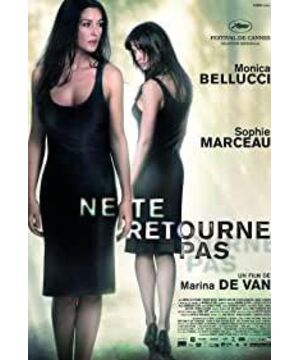A person cannot become another person. In order to become Jenny, Maria abruptly imagined that she had such eyebrows, blond hair, ladylike manners, and even a gift for writing---under such a strong and continuous fantasy, Maria’s child’s personality is split. The real, she has been hiding under this personality mask to escape the reality that she can’t face (a good friend died next to her, forced to be separated from her family, and her dead friend’s mother as a substitute... )
Psychologically speaking, this is a manifestation of the functioning of people’s self-protection mechanism. If you face the grief of reality and it is really unbearable, the self-protection mechanism will begin to work. There are many methods. This is the common one: split personality .
Then, in order to continue to give herself a sense of security, or to say that the subconscious self's emotional needs cannot be changed, Maria imagined Jenny's mother as her own mother, and the marriage partner also imagined the familiar appearance of men in her hometown, such as Her brother (why is her brother, I don’t think it is the psychological root of incest, I think it’s because the sample of the right-age man he is most familiar with before the age of eight is her brother, I think this is very meticulous in the movie, The psychological analysis of the characters is too precise and accurate), and the children born have grown up like their own family, and the room layout is similar to the style of the hometown.
Although many years have passed, Maria has used this protection mechanism to live peacefully, she has been able to escape her true self and the tragedies of the year under the protection of her personality mask. However, due to the failure of the novel, the repressed self resurfaced, and the problem of nowhere to escape still has to be faced: Is this Jenny who can write novels really me? ? ? who am I? ? ? The film uses Maria at the age of eight to constantly harass the personality of Jenny played by Sophie to show Maria's psychological fluctuations.
In other words, whether the face is changed, the scar is deformed, or the space is distorted, in the end, whether she gradually becomes smaller, they all represent her psychological changes in a concrete way. This is one of the highlights of this movie, and it is also important. The means of information dissemination, the director, he just wants to clarify this complicated psychological change! What's awesome is that he really expressed it clearly! In other words, the expression is too detailed and too deep! I have to wonder if the director or screenwriter knows it personally! If I don't have a split personality, how can I know such detailed feelings?
Anyway, if you think about many metaphors in this way, you know what the director wants to say. In the last scene, Maria finally recognizes who she is and lives with her split personality.
ps The scene I like: Maria, who found her home from her memory, danced freely in the joy of singing and singing. The camera gave close-ups, emphasizing that this is an innate dance, and she finally acknowledged herself. The key blow, the music is really strong... Then, my favorite scene came, the passionate dance of the woman in red, and the ecstatic eyes, suggesting that Maria was such a passionate woman!
View more about Don't Look Back reviews









